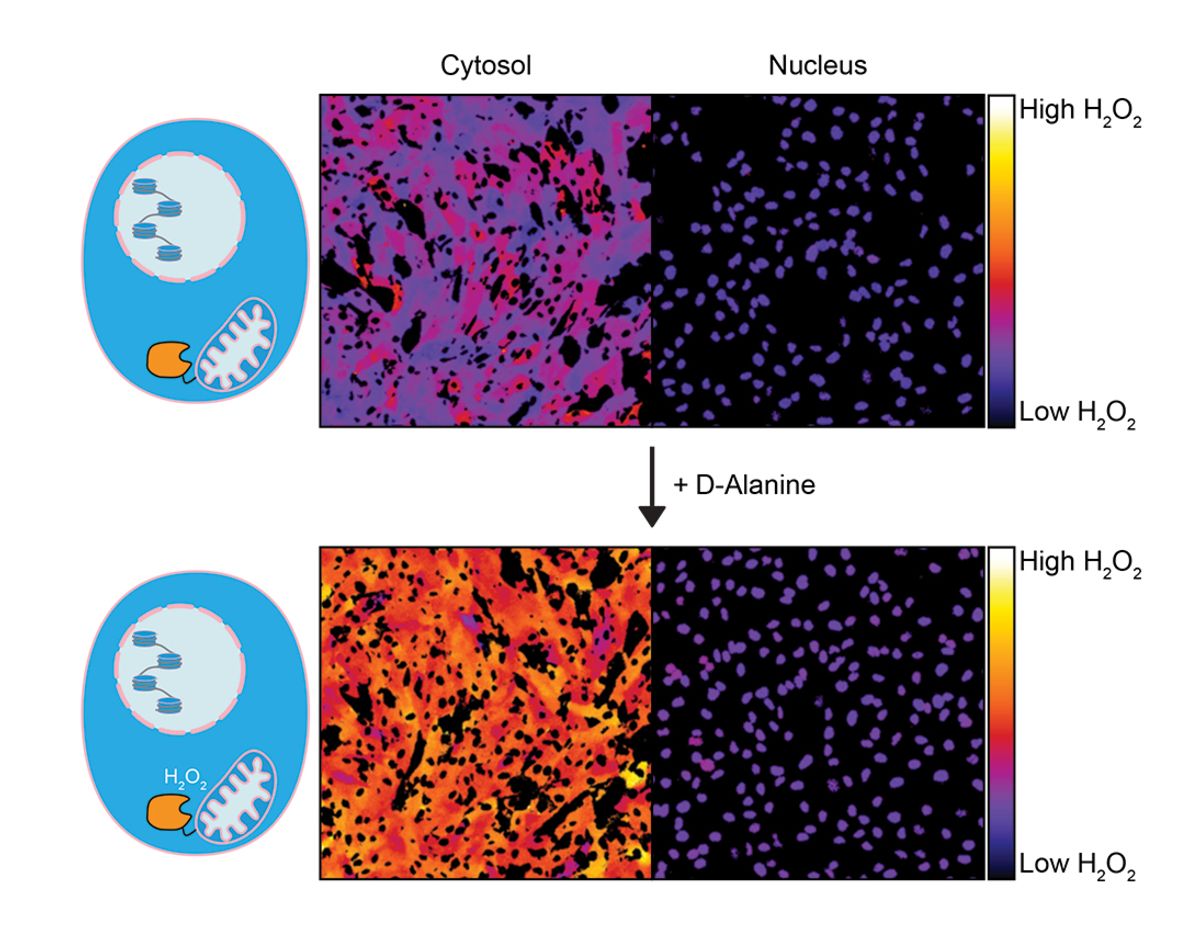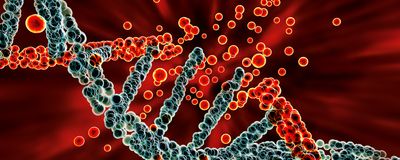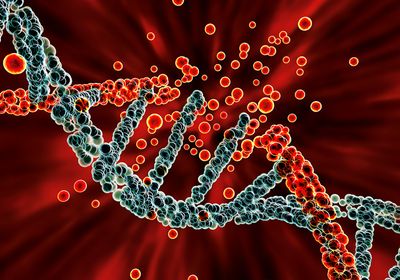ABOVE: Reactive oxygen species can damage DNA. Scientists have assumed the main source of these was from mitochondria. ©istock, Dr_Microbe
Normal metabolic activity produces reactive oxygen species (ROS) that, if not eliminated, can damage cellular components. As a result, ROS from overactive mitochondria are frequently cited as a source of DNA damage. Despite this longstanding belief, few studies have explicitly demonstrated this linkage.
Tobias Dansen, a redox biologist at the University Medical Center Utrecht, admits that even during his graduate studies, he believed that ROS produced by mitochondria could damage DNA. This idea began changing as he attended more meetings and met biochemists studying redox biology. “You start to realize that actually, to get from the mitochondria into the nucleus and damage the DNA, you have to pass a lot of stuff,” he said, adding that because of ROS’s reactivity, it would likely get caught along the way.

Dansen and his graduate student and study coauthor, Daan van Soest, put this assumption to the test. In a paper published in Nature Communications, the team demonstrated that hydrogen peroxide, a ROS produced by mitochondria, does not diffuse to the nucleus.1 Considering the presence of DNA bases mutated by hydroxy radicals in tumors, the findings support a nuclear source of ROS yet to be identified.
To specifically study the location-dependent effect of hydrogen peroxide release, they used D-amino acid oxidase (DAAO), which produces this ROS upon addition of D-alanine.2 The team fused DAAO to either a nucleosome protein or a mitochondrial membrane protein to study the effects of hydrogen peroxide produced at these specific locations.
Hydrogen peroxide poorly diffuses across the nuclear membrane, but the team evaluated if increased concentrations improved this migration. The fluorescent probe HyPer7 (a variant of an original probe, HyPer, named from hydrogen peroxide) activates in the presence of hydrogen peroxide.3,4 The group demonstrated that while hydrogen peroxide produced by DAAO in the nucleus activated nucleus-localized HyPer7, mitochondrial-bound DAAO did not significantly activate nuclear HyPer7 without toxic levels of hydrogen peroxide.
The team hypothesized that hydrogen peroxide levels below the detection of HyPer7 could still induce DNA damage. While nuclear DAAO activation kick-started DNA damage repair proteins and caused DNA strand breaks, mitochondrial-bound DAAO did not cause either of these effects. Additionally, DAAO-produced hydrogen peroxide at the mitochondria membrane did not induce cell cycle arrest, whereas hydrogen peroxide produced by DAAO in the nucleus paused the cell cycle.
While lower levels of hydrogen peroxide produced by DAAO at the mitochondrial membrane did not damage DNA or pause the cell cycle, higher concentrations reduced cells’ viability. The researchers confirmed that the increased production of hydrogen peroxide did not impede the function of mitochondria. They investigated a form of apoptosis caused by hydroxy radicals formed in the presence of iron and found that while these compounds contribute to cell death, cells still died in the presence of increased hydrogen peroxide, suggesting other mechanisms.
“It's going be interesting to see how quickly or readily this idea gets adopted that the [hydrogen peroxide] is not making it into the nucleus,” said Ryan Barnes, a cell biologist at the University of Kansas who was not involved in the study.

Barnes, who found the study methodology rigorous, thought that the answer to the overarching question about mitochondrial ROS damaging DNA was convincing. However, he said that future experiments could explore how cancer evolution, which exposes cells to long-term hypoxic conditions, wears down antioxidant defenses and possibly alters the ability of hydrogen peroxide to diffuse to other locations.
According to Dansen, one thing that still puzzled him and his team was that they observed, like many others, that treating cells directly with hydrogen peroxide caused DNA damage responses and growth arrest, but the cells didn’t die. However, in their study, hydrogen peroxide produced at high levels at the mitochondria induced cell death before it could reach the nucleus. “That's something I cannot get my head around,” Dansen said. “It’s also one of the reasons this dogma was quite strong.” His group is currently investigating this discrepancy.
“It proves again that we have to be careful… to be aware of the dogmas that maybe are out there in biology,” van Soest said. “It just shows that we do have to constantly challenge also old ideas with the newer tools that are being developed over the years because…sometimes old ideas or old findings are not really explained well.”
- van Soest DMK, et al. Mitochondrial H2O2 release does not directly cause damage to chromosomal DNA. Nat Commun. 2024;15:2725
- Pollegioni L, et al. Kinetic mechanism of D-amino acid oxidases from Rhodotorula gracilis and Trigonopsis variabilis. J Biol Chem. 1993;268(19):13850-13857
- Pak VV, et al. Ultrasensitive genetically encoded indicator for hydrogen peroxide identifies roles for the oxidant in cell migration and mitochondrial function. Cell Metab. 2020;31(3):642-653.e6
- Belousov VV, et al. Genetically encoded fluorescent indicator for intracellular hydrogen peroxide. Nat Meth. 2006;3:281-286




